Anatomy of a Firefighting Success
Quick Response Last Week Knocked Down Potential Disaster
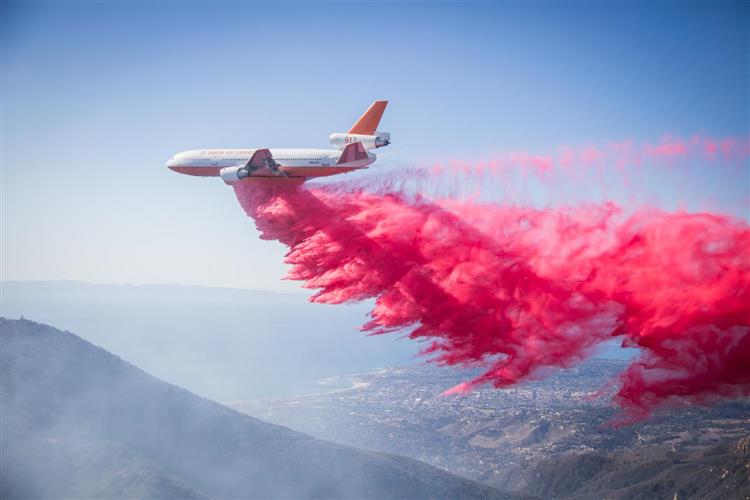
Officials have no word yet as to the cause of last week’s Gibraltar Fire, but it is clear that smoothly coordinated attacks from both air and ground crews snuffed the wind-driven wildfire before it grew to catastrophic proportions. Officially, the blaze burned roughly 21 acres of steep and rugged chaparral between Montecito Peak and Cold Springs Saddle on the mountainside above Montecito.
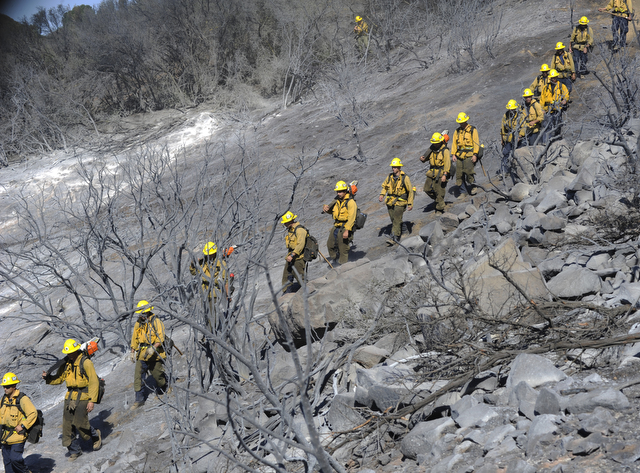
Emergency dispatch operators received the first 9-1-1 call at 5:16 a.m. on October 29 as 40-mph gusts whipped flames 30 feet skyward and the smell of smoke infiltrated neighborhoods below. Within three minutes, the first engines hit the road, and 40 minutes later — after the long, dark climb up Gibraltar Road and eastward on East Camino Cielo — crews pulled over just north of the blaze to cut access roads and call for air support. Four tankers and three helicopters were set in motion.
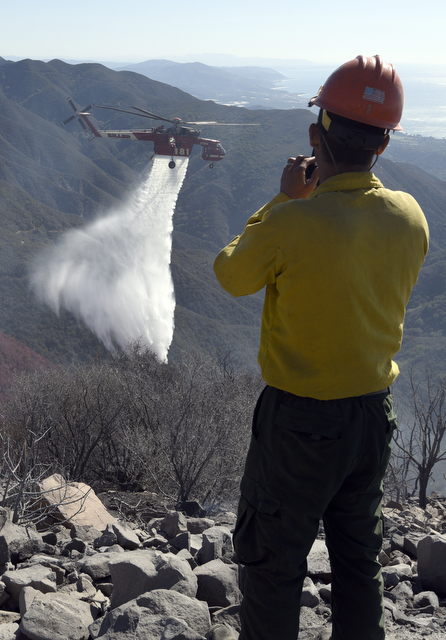
First responders in the air arrived around 7:40 a.m., a pair of water-toting helicopters belonging to the Santa Barbara County Fire Department just ahead of a twin-engine Commander piloted by Forest Aviation officer Mark Nunez, 44, an air attack supervisor with the Los Padres National Forest, the fire’s lead agency. An hour earlier, after assessing the conditions — sustained 25-30 mph winds out of the north-northwest, with gusts to 40 — Nunez had called Southern California’s interagency emergency command center, based in Riverside, and ordered more air tankers. Make it an even dozen, he told dispatchers, and make it fast. Federally contracted tankers normally aren’t online until 9 a.m. or so, Nunez explained, unless they get an emergency wake-up call. Planes would arrive from Santa Maria, Paso Robles, Porterville, Merced, San Bernardino, and Fresno.
To Nunez — whose first big Santa Barbara firefight was 1990’s Painted Cave, which left 5,000 acres, 400 buildings, and one fatality in its wake — the Gibraltar Fire had the potential to become the front country’s next Tea or Jesusita fire, back-to-back blazes that occupy recent memory with terrifying clarity. “Our plan was to hit it as soon as possible with everything we had,” Nunez said.
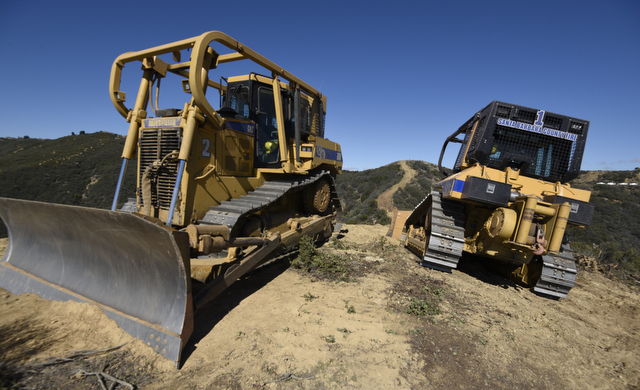
As helicopters buzzed back and forth between the blaze and two refill zones — a few scooped from San Roque’s Lauro Reservoir while the rest filled up from tenders parked on Westmont College’s Lovik Field — the first three tankers (two from Santa Maria and one from Paso) dropped retardant just after 8 a.m. Nunez choreographed the rapidly growing aerial dance from 2,500 feet above the mountaintops.
By 9 a.m., just as the fire reached a critical tipping point between some semblance of control and genuine catastrophe, “We had nine tankers in the air, and 10 helicopters,” Nunez said. A 10th plane, the venerable DC-10, arrived around 9:30 a.m.
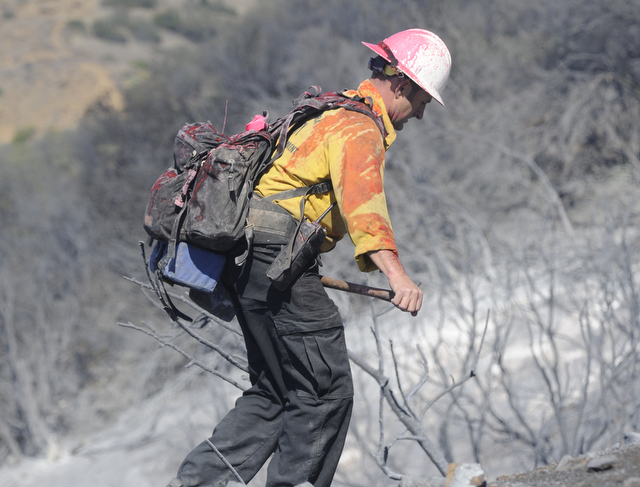
“Because the fire was burning in two drainages, we wouldn’t have had the resources to stop it if it had started moving downhill in both canyons simultaneously,” Nunez said. The assessed property value within the Montecito Fire Protection District — which maintained evacuation warnings for its neighborhoods north of Highway 192 for 25 hours — is more than $8 billion, according to district spokesperson Geri Ventura.
By noon, promises of averted disaster started to take shape, but crews remained vigilant as the forecast called for another blow of afternoon sundowners. The collective sigh of relief came Friday morning, after a long night without any flare-ups.
The general sentiment among firefighters is that the multiagency coordination was an exemplary effort combined with favorable alignment in the heavens. While Thursday’s sundowners — though nerve-racking — didn’t live up to their ominous forecast, Gibraltar crews had also enjoyed the operational ease of not having to compete for aircraft, engines, and boots on the ground, as no other major fires were burning in the state. Add that good fortune to the fact that firefighters have been in training for a worse-case scenario. After all, firestorms are Santa Barbara’s most common natural disaster.
Back in April — as the region entered its fourth year of severe drought, with all its attendant dead or dying grassland, shrubs, and trees — a multiagency caravan of firefighting shot-callers toured three major South Coast wildfire sites — Gap, Painted Cave, and Tea — to revisit access points, lines of attack, and lessons learned. After that, an incident management team was selected from firefighting agencies countywide and trained to be ready at the drop of a hat.
On the day before the fire, fire departments raised fire-danger alerts for the coming sundowners as chiefs powwowed via conference call to discuss getting more men at the ready. County Fire, for example, up-staffed with two extra brush trucks, a water tender, a 20-man hand crew, and a battalion chief, according to Captain David Zaniboni.
Lastly, on the night before the fire, the Montecito district’s MERRAG (pronounced “mirage,” a k a Montecito Emergency Response & Recovery Action Group) volunteers set up tables, chairs, maps, dry-erase boards, and a network of computers at district headquarters, as they do for any potentially dangerous wind event, especially during peak fire season. As unified commanders showed up at daybreak on Thursday, their briefing room was plugged in, well lit, and ready for action, with fresh-brewed pots of coffee close at hand.
It’s too soon to put a precise figure on the cost of knocking down and cleaning up the Gibraltar Fire, according to Andrew Madsen, a Forest Service spokesperson.
“Typically, once the fire is contained, we sit down with our cooperators and discuss cost-sharing to determine who pays for what,” Madsen said. “Because this fire was entirely on National Forest land, we’ll pay the lion’s share. [At this point,] it’s safe to say the fire cost more than $1.5 million.” He added that the trace of rain at the burn site on Monday did not hamper the investigation.



